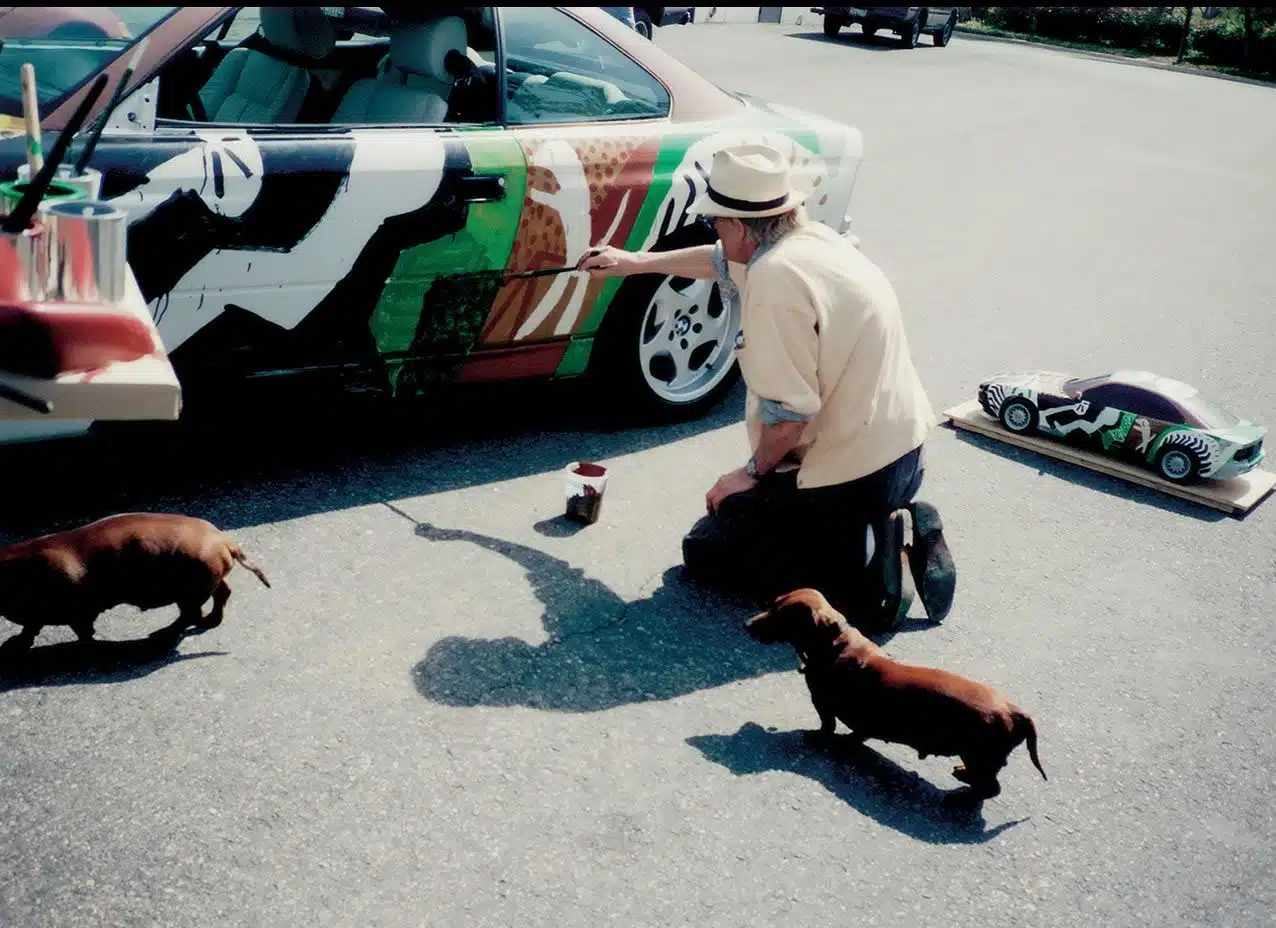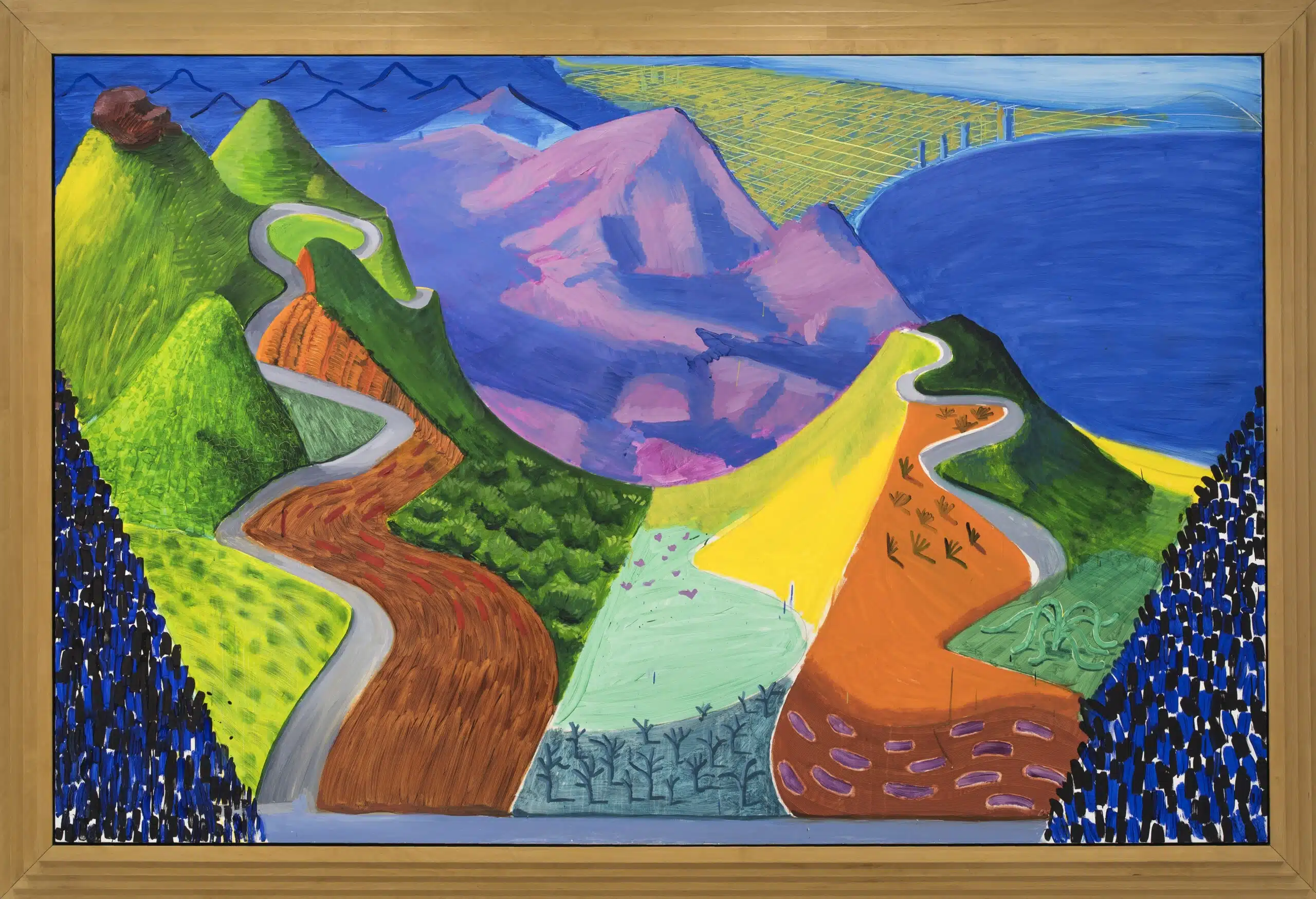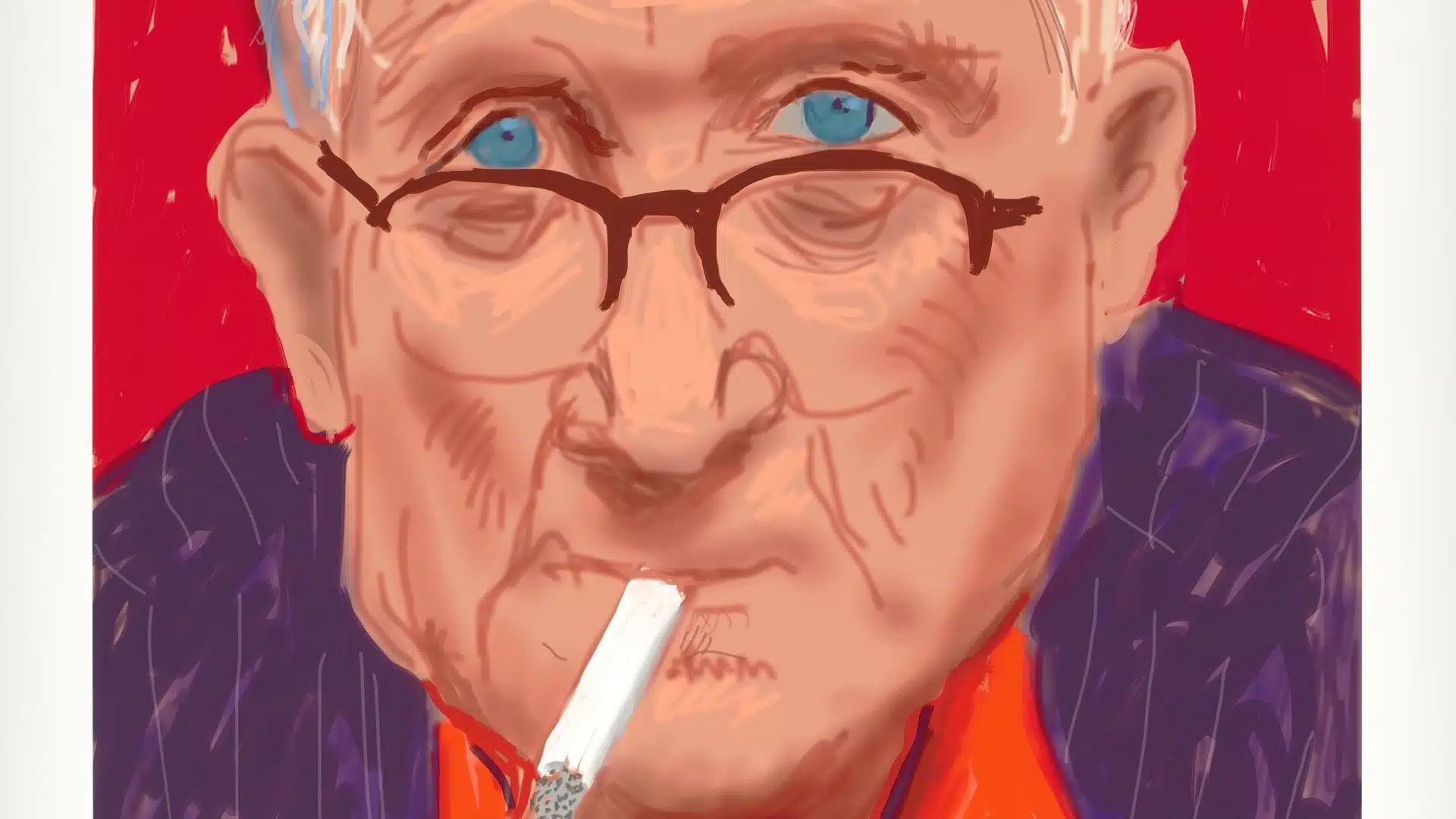If there’s one thing David Hockney’s body of work illustrates, it is the extent of his enthusiasm for approaching art in differing ways. His art reveals how he constantly challenges himself and, by extension, us, to look at the world in a different way.
Consider his take on the BMW Art Car almost a quarter of a century ago. It’s typical of David Hockney to have reflected on project for a long time before committing to the formidable task of painting it. He recognised that the project was an intriguing one, and it piqued his interest. He was thrilled to take on the challenge.
“The most remarkable thing was Hockney’s level of concentration — his drivenness to render in detail the subject before him”
His idea was to turn the car inside out — to examine what might be under the car’s sleek facade — revealing the engine on the bonnet, the driver on the car door, and, of course, his daschund in the back seat. He presented this, as he always does, with an element of humour. For him, this was not about superimposing his style onto a new medium. Rather, it was a totally fresh approach to image making.

David Hockney painting his BMW Art Car, 1995. Courtesy of BMW
I met David Hockney in 1995, around the time that his Art Car was temporarily parked in the Royal Academy’s neoclassical courtyard, coinciding with the opening of his drawing retrospective. There was a marked contrast between Hockney’s restrained, naturalistic drawings inside the august Royal Academy galleries and the vibrant drama of the car — though by then we all knew that his range of abilities was limitless.
“His idea was to turn the car inside out — to examine what might be under the car’s sleek facade — revealing the engine on the bonnet, the driver on the car door, and, of course, his daschund in the back seat. He presented this, as he always does, with an element of humour”
Five years before undertaking the Art Car project, Hockney had experimented with automobiles for his project Wagner Drive. Inspired by the Californian landscape, he ‘performed’ this piece by driving his open top car through the mountainous landscape above Malibu, with the augmented car stereo set to play a composition from Richard Wagner’s Ring Cycle. This multi-sensory experience was orchestrated by the artist’s quickening and reducing of car’s speed to the tempo of the music. Hockney timed his journey so that he could experience the crescendo of the piece at the mountain’s summit, while watching the sun set over the ocean. In later years, he recreated this highly charged moment for a number of passengers.

Pacific Coast Highway and Santa Monica, 1990. Oil on canvas. Photo credit: Fabrice Gibert. Copyright David Hockney
My most significant project with Hockney was David Hockney RA: A Bigger Picture in 2016, an impressive exhibition that demonstrated the artist’s mastery of landscape art. The employment of the car was again central to one particular work in this exhibition. For this piece, he used a film camera to record parts of the Yorkshire Wolds as he drove through them. He soon progressed to filming the countryside with nine cameras attached to the bonnet of his car. This new method of depicting the landscape allowed him to capture in fine detail the natural scenes he has treated in many of his paintings.
“Five years before undertaking the Art Car project, Hockney had experimented with automobiles for his project Wagner Drive. Inspired by the Californian landscape, he ‘performed’ this piece by driving his open top car through the mountainous landscape above Malibu”
Having the opportunity to accompany Hockney and his team when filming, it was clear to me that he could see what the rest of us were unable to, and he was able to capture this on film. On another occasion, I had the chance to sit for him and closely observe his working practice. The most remarkable thing was Hockney’s level of concentration — his drivenness to render in detail the subject before him.
In a digital age, Hockney remains one of the few artists of his generation to experiment with the possibilities of both landscape and portraiture. His recent body of work on iPads is proof that he is an artist who never shies away from a new medium or technology.
The projects described here, although just a snapshot of the artist’s great achievements, show the enormous depth and variety of his body of work, across mediums. I consider myself most fortunate to have been part of this journey over the past couple of decades.
One of the most influential names in contemporary art, David Hockney was born in 1937 in Bradford, Yorkshire. His BMW Art Car was on display at India Art Fair 2019.


